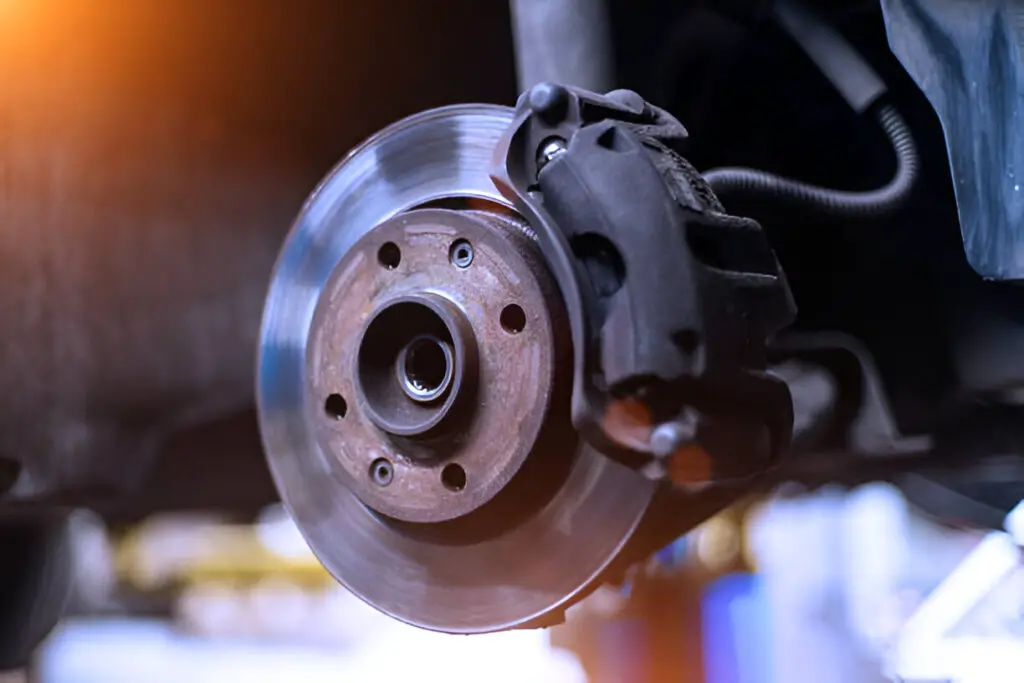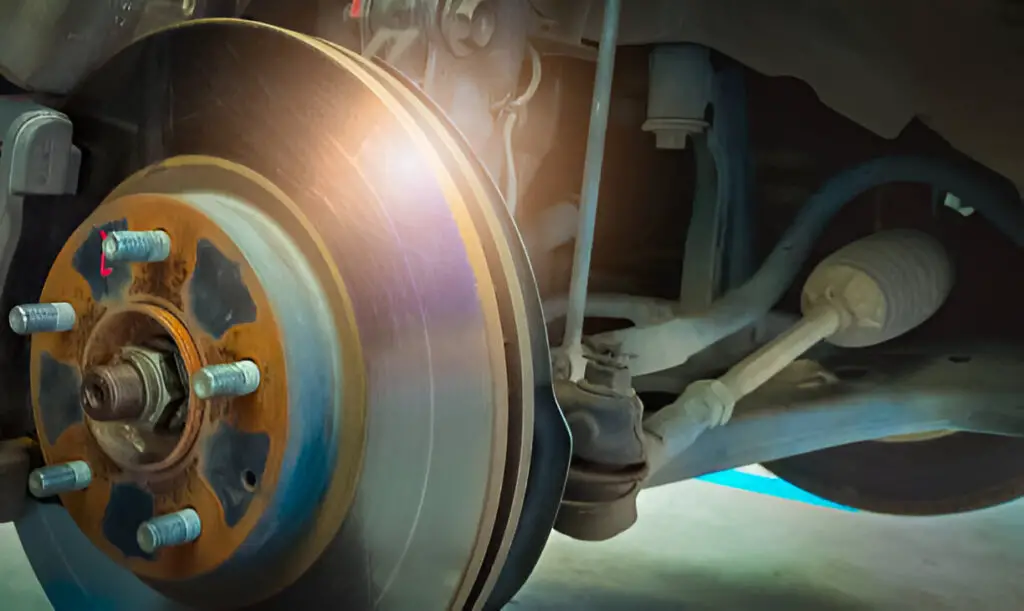Powerstop brakes and rotor problems can cause issues with braking performance and rotor wear. Addressing these issues promptly is crucial to ensure safe and efficient vehicle operation.
When it comes to upgrading or maintaining your vehicle’s braking system, PowerStop brakes and rotors are a popular choice among automotive enthusiasts and everyday drivers alike. Known for their performance and affordability, PowerStop offers a range of brake kits designed to improve stopping power, reduce brake dust, and enhance durability. However, like any aftermarket product, PowerStop brakes and rotors can sometimes present issues.
In this detailed blog post, we will explore common problems associated with PowerStop brakes and rotors, their potential causes, and how to address or prevent these issues. Whether you’re experiencing performance concerns or simply considering an upgrade, this guide will provide valuable insights to help you make informed decisions.

Contents
PowerStop Brakes and Rotors
PowerStop is a leading brand in the automotive brake market, offering various brake kits that include rotors, brake pads, and hardware. These kits are designed for a wide range of vehicles, from everyday commuters to high-performance cars and trucks.
Some key features of PowerStop brake kits include:
- Carbon-Fiber Ceramic Brake Pads: These pads are designed to reduce brake dust, noise, and fade, offering improved durability compared to traditional organic or semi-metallic pads.
- Drilled and Slotted Rotors: PowerStop rotors often come with drilled holes and slots to help dissipate heat and prevent brake fade during heavy braking.
- Z36 and Z26 Brake Kits: These performance kits are tailored for specific applications, such as towing (Z36) or performance street driving (Z26), ensuring optimal performance for different driving styles.
While these features make PowerStop a compelling option, users may encounter some common issues related to brake performance, noise, and rotor longevity.
Common PowerStop Brake and Rotor Problems
Despite their many benefits, PowerStop brakes and rotors are not immune to issues. Here are some common problems drivers may face, along with potential causes and solutions.
1. Brake Noise (Squealing or Grinding)
One of the most frequent complaints regarding PowerStop brakes is noise during braking, such as squealing, squeaking, or grinding. This issue can arise for several reasons:
- Improper Bed-In Process: If the brakes were not properly bedded after installation, the pads and rotors may not seat correctly, causing noise during braking.
- Brake Dust Buildup: While PowerStop’s carbon-fiber ceramic pads are designed to reduce brake dust, some accumulation can still occur, especially in high-performance or towing applications. Excess dust can cause noise when trapped between the pad and rotor.
- Glazed Pads or Rotors: Aggressive driving or overheating can cause the pads or rotors to glaze, leading to a hard, shiny surface that reduces friction and causes squealing or grinding sounds.
Solution: Ensure that the brakes are properly bedded after installation. This process usually involves a series of gradual stops from moderate speeds to allow the pads and rotors to wear evenly. If glazing has occurred, the rotors may need resurfacing, and the pads may require replacement.
2. Rotor Warping or Pulsation During Braking
Another common issue with PowerStop rotors is rotor warping or a pulsating feeling in the brake pedal during braking. Rotor warping occurs when the rotors become uneven due to excessive heat or improper installation. Causes include:
- Overheating: Drilled and slotted rotors, like those from PowerStop, are designed to dissipate heat, but under extreme conditions, such as aggressive driving or towing heavy loads, the rotors can still overheat and warp.
- Improper Torque on Lug Nuts: If the lug nuts are not torqued to the manufacturer’s specifications during wheel installation, uneven pressure can cause the rotor to warp.
- Poor Quality or Defective Rotors: Although PowerStop generally produces high-quality rotors, manufacturing defects can occasionally lead to warping or premature wear.
Solution: If the rotors are warped, they may need to be resurfaced or replaced. Be sure to follow proper torque specifications when installing wheels to avoid uneven pressure on the rotors. Avoid aggressive braking and heavy loads to prevent overheating.
3. Premature Brake Wear
Premature wear of the brake pads or rotors is another issue some PowerStop users report. While PowerStop brakes are designed for enhanced durability, certain factors can cause them to wear out faster than expected:
- Driving Conditions: Heavy towing, off-roading, or aggressive driving can significantly accelerate brake wear, especially with performance rotors and pads.
- Improper Installation: Incorrect installation, such as misaligned calipers or improper bedding, can lead to uneven wear and shorten the life of both the pads and rotors.
- Low-Quality or Mismatched Components: In some cases, users may pair PowerStop rotors with non-matching brake pads or use components from different manufacturers, leading to compatibility issues and accelerated wear.
Solution: Ensure that the brakes are installed correctly and that all components are compatible. For towing or off-roading, consider using the Z36 PowerStop kit, which is designed for heavy-duty use. Regularly inspect the brake components for wear and replace them as needed.
4. Corrosion or Rusting of Rotors
Rust or corrosion on PowerStop rotors can be a concern, particularly in areas with high humidity or where road salt is used during winter. Rust can form on the rotor surface, reducing braking efficiency and causing noise.
- Exposed Metal Surfaces: The rotors’ drilled and slotted design may expose more metal surfaces, making them more susceptible to rust if the vehicle is not driven regularly.
- Lack of Protective Coating: While some PowerStop rotors come with protective coatings to prevent rust, these coatings can wear off over time, especially with heavy use.
Solution: Regularly driving the vehicle can help prevent rust from building up on the rotors. If rust does form, light surface rust can be removed with a wire brush or sandpaper. For severe rust, replacing the rotors may be necessary. Consider using rotors with a rust-resistant coating if you live in an area prone to corrosion.
5. Vibration or Steering Wheel Shake
Vibration or steering wheel shake during braking is often linked to rotor issues, such as warping or uneven wear. However, it can also result from other factors:
- Misaligned or Worn Suspension Components: Worn suspension parts, such as ball joints or tie rods, can cause vibrations during braking, which may be mistaken for rotor problems.
- Unbalanced Wheels or Tires: If the wheels or tires are unbalanced, it can create vibrations that are more noticeable during braking.
Solution: If the rotors are warped, they should be resurfaced or replaced. Additionally, check the suspension components for wear and balance the wheels to eliminate vibrations.

Preventing PowerStop Brake and Rotor Issues
To maximize the performance and longevity of your PowerStop brakes and rotors, follow these preventive measures:
- Proper Installation: Always follow the manufacturer’s installation instructions, and ensure that the rotors and pads are compatible with your vehicle.
- Bed the Brakes Correctly: After installation, perform the bed-in process by gradually applying the brakes during the first few drives to ensure even wear and optimal performance.
- Avoid Overloading: For towing or off-roading, choose a brake kit designed for heavy-duty use, such as the PowerStop Z36 kit. Avoid aggressive driving to prevent overheating and excessive wear.
- Regular Maintenance: Inspect the brakes and rotors regularly for wear, cracks, or other damage. Keep the rotor surface clean and free of debris or rust.
- Use the Correct Torque: When tightening the lug nuts, always use a torque wrench and follow the vehicle’s recommended torque settings to prevent rotor warping.
Frequently Asked Questions
Here are some FAQs about PowerStop brakes and rotor problems –
1. Why are my PowerStop brakes making a squealing noise?
Squealing noise can occur if the brakes were not properly bedded, or if there is brake dust buildup, glazing, or wear. Ensure the brakes are bedded correctly and inspect the pads and rotors for glazing or debris.
2. What causes PowerStop rotors to warp?
PowerStop rotors may warp due to excessive heat from aggressive driving, improper torque on the lug nuts, or manufacturing defects. To prevent warping, avoid heavy braking, especially in high-performance scenarios, and ensure the wheels are installed with the correct torque.
3. How long do PowerStop brakes and rotors typically last?
The lifespan of PowerStop brakes and rotors depends on driving conditions, vehicle use, and maintenance. Under normal driving conditions, they can last between 30,000 to 70,000 miles. Regular inspection and proper maintenance can extend their lifespan.
4. Can I use PowerStop pads with other brand rotors?
While it is possible to use PowerStop pads with other brand rotors, it’s recommended to use PowerStop rotors for optimal performance and compatibility. Mismatched components can lead to uneven wear and reduced braking efficiency.
5. How do I prevent rust from forming on PowerStop rotors?
Driving your vehicle regularly can help prevent rust from building up on the rotors. For rust-prone environments, consider using PowerStop rotors with a protective coating or clean the rotors regularly to remove surface rust.
Conclusion
PowerStop brakes and rotors offer a blend of performance, affordability, and durability, making them a popular choice for many drivers. However, as with any brake system, issues such as noise, warping, and premature wear can arise if not properly installed or maintained.
By understanding the common problems and following the recommended preventive measures, you can ensure that your PowerStop brakes and rotors deliver reliable performance and longevity. Regular maintenance, correct installation, and choosing the right kit for your driving needs are key to avoiding brake system issues.